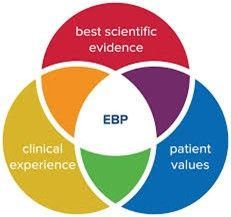The 90-Day Accreditation Preparation
When behavioral health organizations become accredited, they use Joint Commission, the Council on Accreditation, and CARF as the survey agencies. The purpose of accreditation is to receive government or managed care contracts. Accreditation acts as a “seal of approval”, like the Good Housekeeping Seal. But most agencies do not honor their accreditation as they are supposed to.
These accreditation agencies usually give 3-year accreditations. This means the agency has sufficiently shown its competence in its administration and programming. Although recommendations or corrections may be necessary, the agency passed its survey with flying colors. However, when the survey report comes and the corrections are made, most agencies take their policy manuals and work and put it in their basement for another 3 years. It’s treated like a Thanksgiving dinner; clean the house, get all the preparations ready, have the meal, and then let the house go until the next year.
Accreditation agencies want behavioral health organizations to continue the same type of services for the next 3 years as they did right before the survey. They want to see that the organization keeps up the same standards during the entire 3 years. For example, CARF asks organizations to provide annual conformance to quality report. Some organizations do this annual evaluation while many do not.
As a result, the survey process usually consists of an organization frantically running around three to six months before the actual visit. Because organizations do not have a designated person to handle their survey employees add extra workload to their already busy schedule. Is there an easier way?
If your organization is going to wait until the last minute, here are some steps you can take to be ready in 90 days:
- Look at your prior survey results. Any recommendations from that survey should be corrected and part of the new way of operating. If they aren’t, your organization could be in trouble; not fixing prior problems signals to the surveyors that you aren’t keeping up.
- Look at the new accreditation manual and any changes from before. Some agencies like CARF will give updates on changes made. Sections are deleted, modified, or consolidated. Knowing what changed allows you to modify practices and policies.
- Get charts and staff ready. Accreditation agencies like to look at open or closed charts which they let you pick, so go over them meticulously. Tell your staff about the survey and pick some who the surveyors can talk to. Also, identify clients or referral sources to who the surveyors can speak.
- Spruce up your policy manual. If the manual is three years old (or older), it’s time for a review. Whether it’s a major overhaul or simply some minor corrections, surveyors want to know you’re keeping up.
- Last, and most importantly, be prepared. Have all documents marked or ready to go. First impressions are vital with surveyors. If your organization makes it easy for the surveyor to find what they need at the beginning, then the survey goes well for you. The reverse is unfortunately also true.
In conclusion, although your behavioral health organization should always be ready for an accreditation survey, you can do it in 90 days. Just don’t tell the surveyors about it.
Praxes provides consulting to behavioral health organizations, including accreditation. For more information, please contact us.




